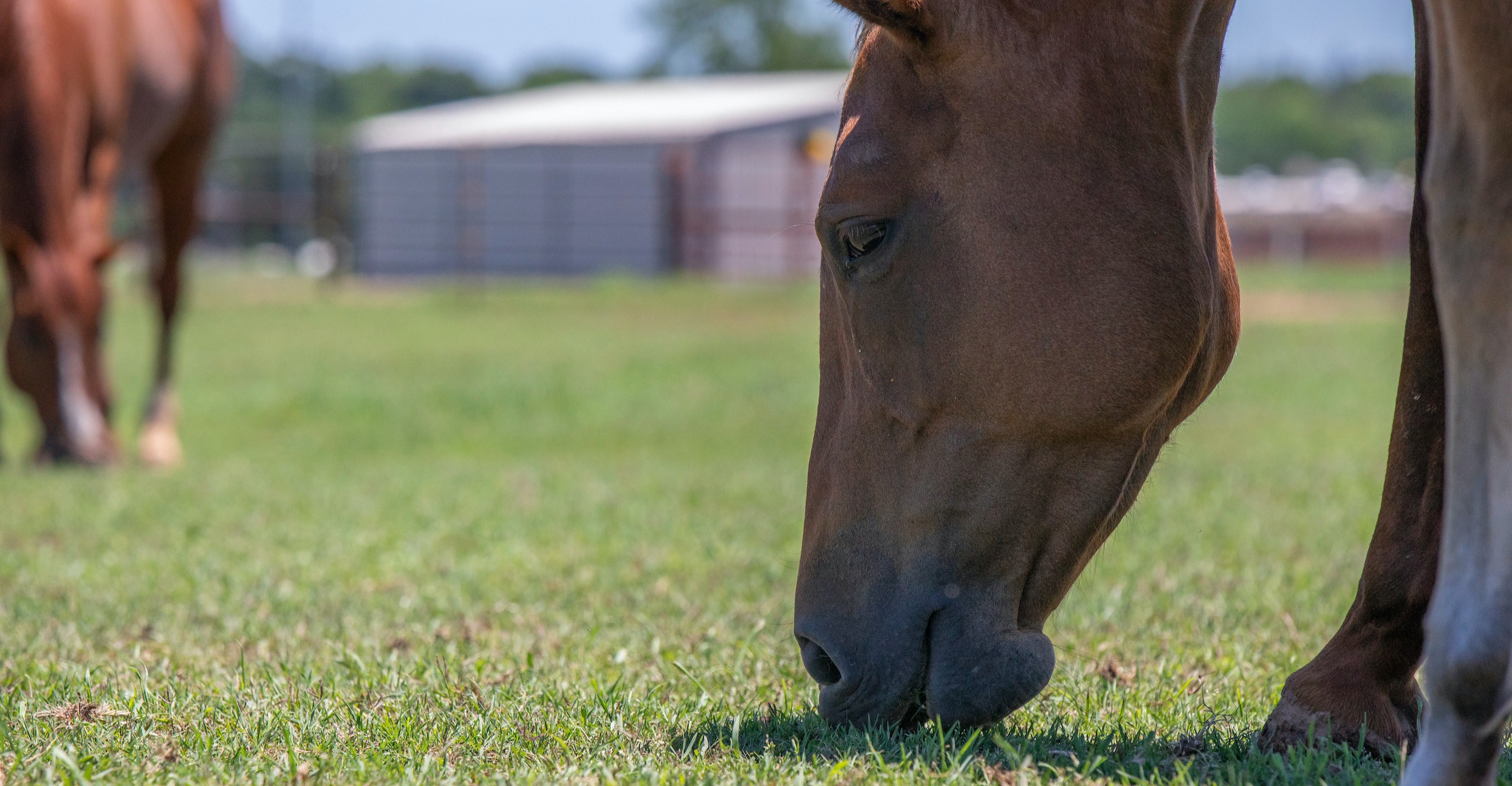
Horse owners: Mind the mud and rich pastures of spring
Tuesday, March 29, 2022
Media Contact: Gail Ellis | Communications Specialist, Copywriter | 405-744-9152 | gail.ellis@okstate.edu
Spring rains are a welcome sight to behold this year, but the mud left behind after a heavy shower can transform a horse lot into a sloppy mess.
Kris Hiney, Oklahoma State University Extension specialist for horses, said it’s best to make a mud plan for the high-traffic areas around gates and feeders before rain arrives.
“Basic mud control prevention includes routine manure removal and smart site selection,” she said. “You don’t want all that organic matter running downhill.”
Hiney said crushed limestone can help improve footing in high-traffic areas. Also, installing a drainage system of geotech fabric and rock is an effective method of mud control but requires greater expense.
In addition to their animals, horse owners are responsible for protecting their pastures, too. Grass should be at least 4 to 6 inches tall before horses are turned out on it to help plant roots become well established and survive grazing.
“Running horses can easily tear up grass in muddy conditions, especially in areas of the state with fragile soil,” Hiney said. “In reseeded pastures, animals should be kept off for a least one year to establish growth.”
Horses exposed to unlimited pasture are at risk of laminitis, a common but serious condition also known as founder. Hiney said research shows there is a link between a horse’s insulin levels and laminitis. Spring grass is high in sugar, starch and carbohydrates that can change a horse’s hormone profile and spike the animal’s insulin levels.
“That’s what ultimately alters blood flow to the hoof,” she said. “The sensitive laminae tissue of the hoof becomes inflamed and incredibly painful. It’s like wearing a shoe that’s too small.”
If enough tissue damage occurs, integrity of the hoof is lost. Classic signs of founder are hoof pain, usually in a horse’s front feet. The animal may be slower to come to feed, lay down more than normal or not want to pick up a foot and shift weight distribution. In severe cases, the horse may rock back on its hind quarters to reduce weight on the front feet.
“In the acute stage, their feet may be hot because of the increased blood flow. Or you can feel their pulse with your fingers on their pastern (the area between the hoof and the fetlock joint) because pain elevates heart rate,” Hiney said.
Once laminitis is detected, clear communication and an effective treatment plan with the horse’s farrier can help stabilize its hoof. The animal’s outcome depends on the amount of structural damage that has occurred.
“When you’re turning out horses, approach it in two ways – the health of the horse and the health of the pasture,” Hiney said. “For metabolic horses that already have some insulin dysregulation, I’d proceed with caution and be reluctant to have them on spring pasture. The higher nutrient content and different composition of pasture grass can overwhelm a horse’s gut. Gradually introduce them to pasture and do limited turnout.”
Hiney’s advice also applies to donkeys that are often turned out with horses. As animals that evolved in a very arid, desert climate, they are metabolically efficient and require about three-fourths of the feed needed by a horse of similar size.
“It’s easy to overfeed them, and they can be prone to the same laminitis and metabolic issues we see with ponies,” Hiney said.
Animals and humans look forward to the spring green-up every year, but for animals on limited acreage, Hiney said it’s best to be patient with pasture growth and avoid mud. Learn more about how to manage grazing for horses and achieve peak performance from pastures through free OSU Extension resources.
